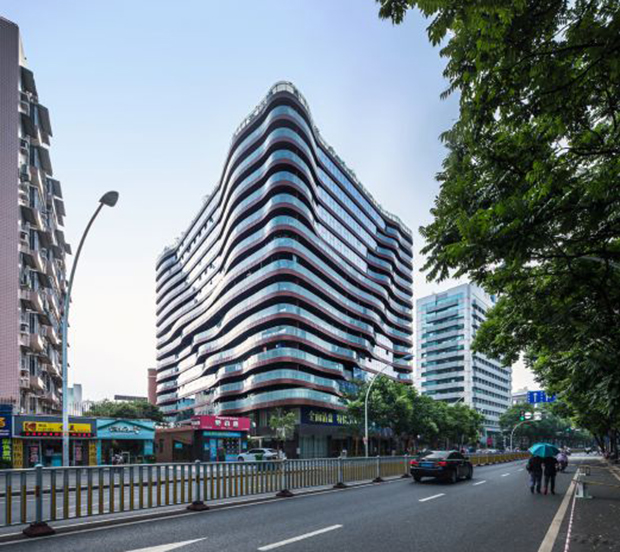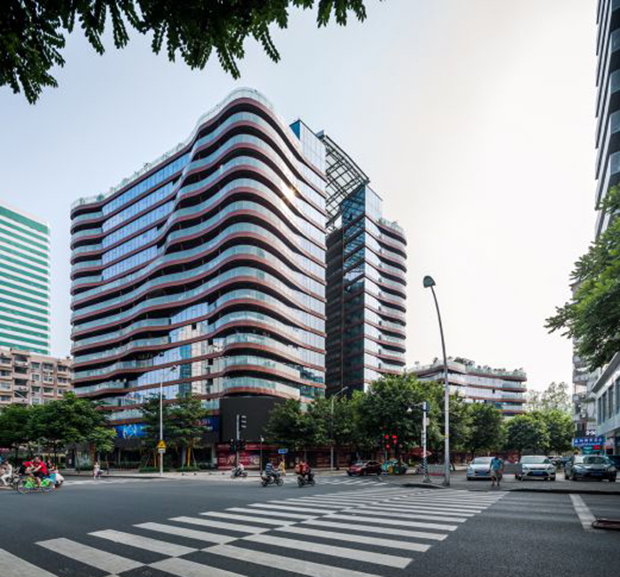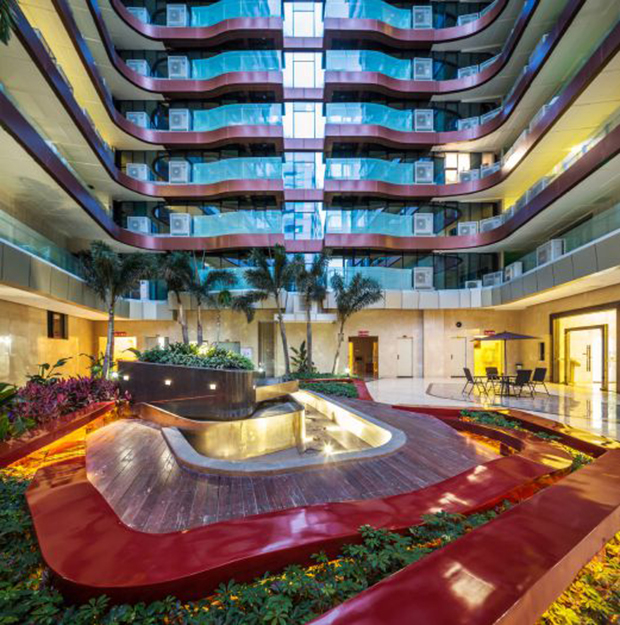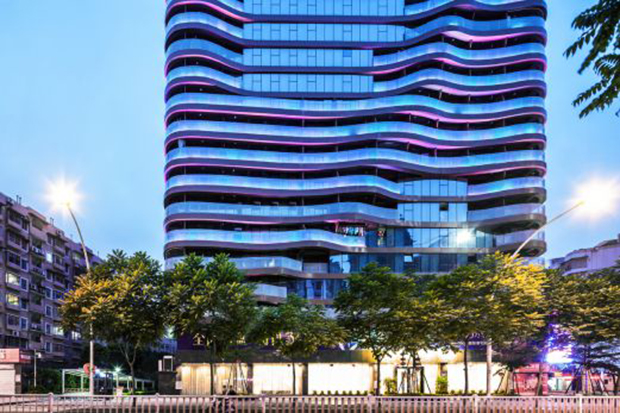
How China's regulations gave rise to this building
Dutch NEXT firm have created this undulating exterior to fit this apartment block into a crowded city centre
Some architects claim to build ‘cities in the sky’, where inhabitants are promised all manner of multistory activity and interaction. In a vast Chinese city, perhaps one tower pulls this off better than others, at ground level, at least. Fuzhou Shouxi’s u-shaped floorplan for the 400 apartments wraps around the ground floor’s communal living space.
Fuzhou is the capital of Fujian Province, and this rounded form by NEXT Architects has taken up residence in the old centre. The Amsterdam-based practice has made the best of both a tricky site and strict local planning stipulations, which regulate the amount of daylight a new building can block from neighbours.

NEXT managed to meet these regs by curving the building around the perimeter. This gives it visual as well as spatial benefits. The wow-factor is the wavy façade, which also houses a balcony for each flat, giving each dwelling an individual aspect. Yet undulating around its neighbours, the building’s form also maintains its neighbours' light levels.
“Manipulating the balconies around the building creates diversity and variety, which makes each apartment unique,” says NEXT partner John van de Water. "At the same time, the staggering of balconies creates a strong identity for the building as a whole."

The communal space may be rather gaudy in its design to Western eyes, with its bright red benching. However, it will be well lit, as the atrium is topped with a glass roof, and if residents want to escape for a breath of fresh air, there’s a roof garden.
NEXT, which opened its Beijing office in 2005, has a track record of fresh and inspiring projects in China. The Fuxhou tower follows in the footsteps of their Dargon King River footbridge in Changsha Meixi Lake District, which will be based on the Mobius strip.

For more on equally brilliant architectural developments take a look at our new book, Architizer A+Awards 2015; for more on innovative domestic architecture in East Asia get Jutaku.